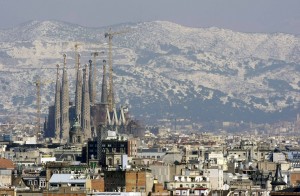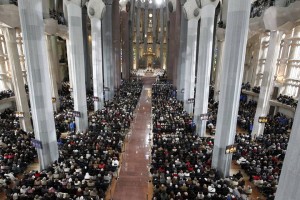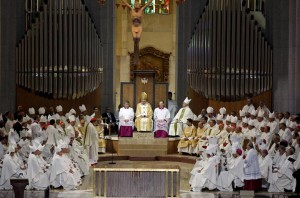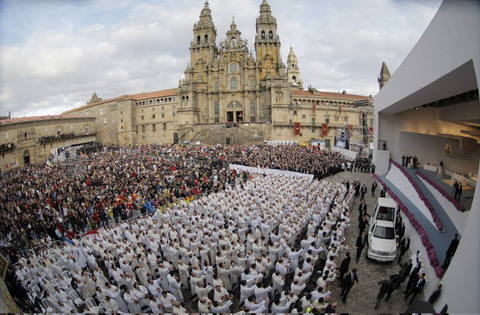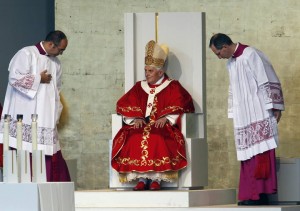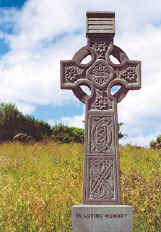Blessed John Duns Scotus Church ,
Glasgow
Gorbals
Chapel open again
September 14, 2010
The Blessed John Duns Scotus Chapel in the Gorbals has
re-opened for worship, five years after a fallen candle sent it up in flames.
The blaze
started on 7 July 2005, the same day London
November 8
Blessed John Duns Scotus
(c. 1266-1308)
Beatified
20 March 1993 by John Paul II (cultus confirmed)
John Duns Scotus, Saint and
Doctor of the Church
John Duns Scotus should
be canonized a Saint and declared a Doctor of the Church for the following
reasons:
1.
He led a holy life and was a devout Catholic.
2.
By God's Grace and Providence
3.
He taught, clarified, and upheld the doctrine of the Immaculate Conception even
when the idea was rejected by those around him. It is difficult to understand
and believe a doctrine which is rejected by one's peers. John Duns Scotus not
only understood and believed, but also stood nearly alone in arguing strongly
for this doctrine.
4.
The doctrine of the Immaculate Conception is one of the most important
teachings about the Virgin Mary. The Immaculate Conception both defines the
beginning of her life and conditions the remainder of her life. Without the
Immaculate Conception, the Virgin Mary would not be herself. God chose to teach
the Church the doctrine of the Immaculate Conception through John Duns Scotus,
therefore he is a Doctor of the Church.
The
requirements for canonization should be adjusted in this extraordinary case.
There are many Saints and Blesseds in the Church, but few have contributed to
the understanding of a fundamental doctrine in the same manner and degree as
John Duns Scotus. No verification of a miracle should be required for the
canonization of Duns Scotus because of his exemplary efforts to advance the
doctrine of the Immaculate Conception before it was widely accepted by Bishops,
theologians, and the faithful.
by
Ronald L. Conte Jr.
Comment:
Drawing on the work of John Duns Scotus, Pope Pius IX solemnly defined the Immaculate Conception of Mary in 1854. John Duns Scotus, the "Subtle Doctor," was beatified in 1993.
Father Charles Balic, O.F.M., the foremost 20th-century authority on Scotus, has written: "The whole of Scotus's theology is dominated by the notion of love. The characteristic note of this love is its absolute freedom. As love becomes more perfect and intense, freedom becomes more noble and integral both in God and in man" (New Catholic Encyclopedia, Vol. 4, p. 1105).
Drawing on the work of John Duns Scotus, Pope Pius IX solemnly defined the Immaculate Conception of Mary in 1854. John Duns Scotus, the "Subtle Doctor," was beatified in 1993.
Father Charles Balic, O.F.M., the foremost 20th-century authority on Scotus, has written: "The whole of Scotus's theology is dominated by the notion of love. The characteristic note of this love is its absolute freedom. As love becomes more perfect and intense, freedom becomes more noble and integral both in God and in man" (New Catholic Encyclopedia, Vol. 4, p. 1105).
Quote:
Intelligence hardly guarantees holiness. But John Duns Scotus was not only brilliant, he was also humble and prayerful—the exact combination St. Francis wanted in any friar who studied. In a day when French nationalism threatened the rights of the pope, Scotus sided with the papacy and paid the price. He also defended human freedom against those who would compromise it by determinism.Ideas are important. John Duns Scotus placed his best thinking at the service of the human family and of the Church.
Intelligence hardly guarantees holiness. But John Duns Scotus was not only brilliant, he was also humble and prayerful—the exact combination St. Francis wanted in any friar who studied. In a day when French nationalism threatened the rights of the pope, Scotus sided with the papacy and paid the price. He also defended human freedom against those who would compromise it by determinism.Ideas are important. John Duns Scotus placed his best thinking at the service of the human family and of the Church.



